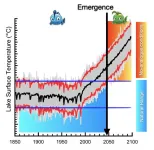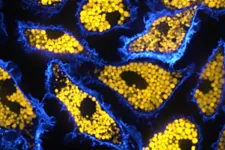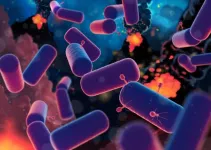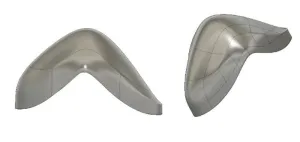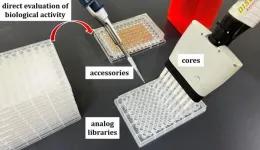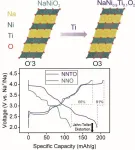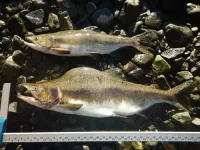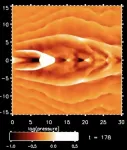(Press-News.org) High and low tide cause low and high methane fluxes
Methane, a strong greenhouse gas that naturally escapes from the bottom of the North Sea, is affected by the pressure of high or low tide. Methane emissions from the seafloor can be just easily three times as much or as little, depending on the tide. This is shown by NIOZ oceanographer Tim de Groot, in a publication in Nature Communications Earth and Environment. "Our research shows that you can never rely on one measurement when you want to know how much methane escapes from the seafloor," De Groot emphasizes.
Swamp gas at sea
Methane (CH4) is a particularly strong greenhouse gas. Among other sources, it is produced when plant remains and other organic material in the bottom of a swamp or a canal, but also in the bottom of the North Sea, is broken down by bacteria, in the absence of oxygen. In the case of the North Sea, this involves old layers of organic materials at a depth of up to 600 meters in the seabed, which is converted by bacteria into methane. And like from a muddy canal that you poke into with a stick, that methane can also escape from the sea floor when the pressure gets high enough.
Large variation
To close the books on all sources and sinks of greenhouse gases, it is important for climate science to know how much methane is coming out of the seafloor and, more importantly, how much of that powerful greenhouse gas reaches the atmosphere. De Groot now cautions against jumping to conclusions in that research. Measurements at a bubbling methane source at a depth of forty meters, near the Dogger Bank which is located roughly between Denmark and Scotland, showed that considerable variations can occur. Not only do methane emissions differ between summer and winter, but high and low tides also appear to have a robust influence: emissions can easily be three times higher or lower depending on the tide. “If you don’t take this effect into account, you will probably over- or underestimate the methane emission from the sea bottom,” says De Groot.
Bacteria eating methane
In summer, when the water is slightly calmer and warmer and different temperature layers can be seen, measurably less methane is released from the water into the air above it. De Groot attributes this phenomenon to the activity of yet other bacteria, that actually consume methane and then emit it as the less potent greenhouse gas CO2. "In summer, the water is calmer, and the methane is more concentrated in the lower layers. Bacteria then have more time to convert the gas into water and CO2", De Groot says.
Warning colleagues
One cannot really influence the amount of methane escaping from the soil or being cleared by bacteria in seawater. Nevertheless, De Groot notes that the warming of the climate, in this case has a positive effect. “In warmer waters, more methane is consumed by bacteria. On the other hand, increasing storms may enhance the amount of methane that escapes to the atmosphere.”
The research by De Groot and colleagues is therefore primarily a warning to colleagues in science. "If you take too few measurements and then only during high tide or in the summer, you could easily conclude that the amount of methane from the seabed is not that bad. You can only get an adequate picture of the emission of this greenhouse gas if you take regular measurements, preferably in different seasons," says De Groot.
END
High and low tide cause low and high methane fluxes
2024-07-12
ELSE PRESS RELEASES FROM THIS DATE:
A better way to make RNA drugs
2024-07-12
While the COVID-19 vaccines introduced many people to RNA-based medicines, RNA oligonucleotides have already been on the market for years to treat diseases like Duchenne Muscular Dystrophy and amyloidosis. RNA therapies offer many advantages over traditional small molecule drugs, including their ability to address almost any genetic component within cells and to guide gene editing tools like CRISPR to their targets.
However, the promise of RNA is currently limited by the fact that rapidly growing global demand is outpacing the industry’s ability to manufacture it. The standard method of chemically ...
Unprecedented warming threatens earth’s lakes and their ecosystems
2024-07-12
Lakes, with their rich biodiversity and important ecological services, face a concerning trend: rapidly increasing temperatures. A recent study published in Nature Geoscience by an international team of limnologists and climate modelers reveals that if current anthropogenic warming continues until the end of this century, lakes worldwide will likely experience pervasive and unprecedented surface and subsurface warming, far outside the range of what they have encountered before.
The study uses lake temperature ...
Cellular inflammation uncovered in rare neurodegenerative condition
2024-07-12
Researchers at The Hospital for Sick Children (SickKids) have found that inflammation in an immune cell may be responsible in part for some severe symptoms in a group of rare genetic conditions called lysosomal storage diseases (LSDs).
LSDs affect about one in 7,700 live births worldwide. Children with the condition typically present at a young age with progressive neurodegeneration. Many children with LSDs die prematurely, and current treatments focus on symptom management.
Until now, the role of macrophages in the immune system and LSDs was ...
Insight into one of life’s earliest ancestors revealed in new study
2024-07-12
An international team of researchers led by the University of Bristol has shed light on Earth’s earliest ecosystem, showing that within a few hundred million years of planetary formation, life on Earth was already flourishing.
Everything alive today derives from a single common ancestor known affectionately as LUCA (Last Universal Common Ancestor).
LUCA is the hypothesized common ancestor from which all modern cellular life, from single celled organisms like bacteria to the gigantic redwood trees (as well as us humans) descend. LUCA represents the root ...
Real-life ‘stillsuit’: Dune-inspired upgrade for spacesuits allow astronauts to recycle urine into water
2024-07-12
Astronauts on spacewalks famously have to relieve themselves inside their spacesuits. Not only is this uncomfortable for the wearer and unhygienic, it is also wasteful, as – unlike wastewater on board the International Space Station (ISS) – the water in urine from spacewalks is not recycled.
A solution for these challenges would be full-body ‘stillsuits’ like those in the blockbuster Dune franchise, which absorbed and purified water lost through sweating and urination, and recycled it into drinkable water. Now, this sci-fi ...
A comprehensive derivative synthesis method for development of new antimicrobial drugs
2024-07-12
A method to screen a wide variety of drug candidates without laborious purification steps could advance the fight against drug-resistant bacteria.
Efforts to combat the increasing threat of drug-resistant bacteria are being assisted by a new approach for streamlining the search for antimicrobial drug candidates, pioneered by researchers at Hokkaido University, led by Assistant Professor Kazuki Yamamoto and Professor Satoshi Ichikawa of the Faculty of Pharmaceutical Sciences. Their methods, developed together with researchers elsewhere in Japan and in the USA, are discussed ...
Improving cycling performance of sodium-ion batteries through titanium substitution
2024-07-12
Researchers at Karlsruhe Institute of Technology (KIT) have made significant advances in sodium-ion battery (SIB) technology by improving cycling performance of the NaNiO2 cathode. They successfully synthesized, for the first time, the cathode active material NaNi0.9Ti0.1O2, which delivers a specific capacity of 190 mAh/g, thus positioning it as a potential candidate for application in high-energy-density SIBs. This innovative approach not only improves battery stability but also propels us toward advanced energy-storage solutions beyond.
With its high theoretical ...
Hatcheries can boost wild salmon numbers but reduce diversity
2024-07-12
The ability of salmon hatcheries to increase wild salmon abundance may come at the cost of reduced diversity among wild salmon, according to a new University of Alaska Fairbanks–led study.
The number of juvenile salmon released into the North Pacific Ocean by hatcheries increased rapidly in the second half of the last century and remains at over 5 billion each year. Salmon hatcheries have helped push annual pink salmon harvests in Prince William Sound from about 4 million fish prior to hatchery programs to roughly 50 million in recent years.
Using data collected from pink salmon streams ...
Artificial intelligence speeds up heart scans, saving doctors’ time, and could lead to better treatment for heart conditions
2024-07-12
Researchers created a computer model that uses AI to examine heart images from magnetic resonance imaging (MRI)
Results were comparable to those worked out by doctors manually, but instead of taking 45 minutes or more, the AI model takes just a few seconds
The AI model could lead to more efficient diagnoses, better treatment decisions and improved outcomes for patients
Researchers have developed a groundbreaking method for analysing heart MRI scans with the help of artificial ...
How the 'heart and lungs' of a galaxy extend its life
2024-07-12
Galaxies avoid an early death because they have a "heart and lungs" which effectively regulate their "breathing" and prevent them growing out of control, a new study suggests.
If they didn't, the Universe would have aged much faster than it has and all we would see today is huge "zombie" galaxies teeming with dead and dying stars.
That’s according to a new study published in the Monthly Notices of the Royal Astronomical Society, which investigates one of the great mysteries of the Universe – why galaxies are not ...
